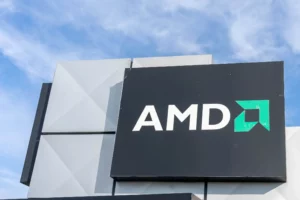
Navigating the Future of Retail Supply Chain
The retail supply chain landscape is poised for significant transformation in the years to come. Gone are the days when a single technology or solution would revolutionize the industry. Instead, we’re entering an era where a combination of innovative technologies and regulatory changes will shape the future.
In recent decades, various buzzwords have dominated the supply chain narrative – from “demand-driven supply networks” to blockchain. While these concepts showed promise, their impact was limited by their inability to be fully integrated into daily operations. However, I firmly believe that the time has come for a resurgence of blockchain-enabled technologies as stringent regulations on traceability begin to take effect.
One key area where this will manifest is in food safety and security. The impending FSMA 204(d) regulations in the grocery and convenience store sector are set to revolutionize supply chain operations by mandating lot-level data collection and tracking across various handshakes. In response, companies must adapt by implementing innovative solutions like blockchain technology or engaging in continuous improvement processes to enhance traceability and transparency.
This increased tracking intelligence will not only improve food safety efforts but also lead to a reduction of unnecessary food waste. Furthermore, the shift toward zero inventory models in the retail clothing sector presents a unique set of challenges that can be addressed through micro-analyzing warehouse and store operations.
In the pharmacy retail segment, the need for improved traceability and condition monitoring will rise to the forefront as regulations on over-the-counter drugs and temperature control become more stringent. Meeting these requirements while avoiding costly recalls due to inventory mismanagement is a must.
Another critical area of focus will be supply chain fulfillment, where workforce shortages, minimum wage increases, and pressure for efficiency are driving innovation. Automation, already becoming increasingly prevalent, will play an even more significant role in bridging the gap left by high attrition rates and the need for rapid employee training.
The rise of micro-fulfillment strategies is also worth noting. Rather than attempting to create a one-size-fits-all approach, companies are now focusing on niche fulfillment solutions tailored to specific products or departments. This targeted strategy enables quicker implementation and better resource allocation, ultimately leading to enhanced customer satisfaction and operational efficiency.
As we look ahead, the role of software tools in demand sensing and forecasting will become even more critical. By leveraging AI and machine learning capabilities, these platforms can provide real-time insights and adjust their models continuously to improve accuracy. While technology is essential, human decision-making remains vital, as it allows for strategic deduction and experience-based decision-making that surpasses machines.
The key takeaway for retail executives is this: the future of supply chain management will be shaped by a delicate balance between regulatory changes and technological advancements. Staying ahead of these shifts through continuous improvement efforts and embracing innovative strategies that facilitate greater traceability in operations will be essential to success.
It’s time for retailers to rethink their approach, embracing the convergence of technology and regulation to propel their businesses forward.
Source: www.forbes.com


